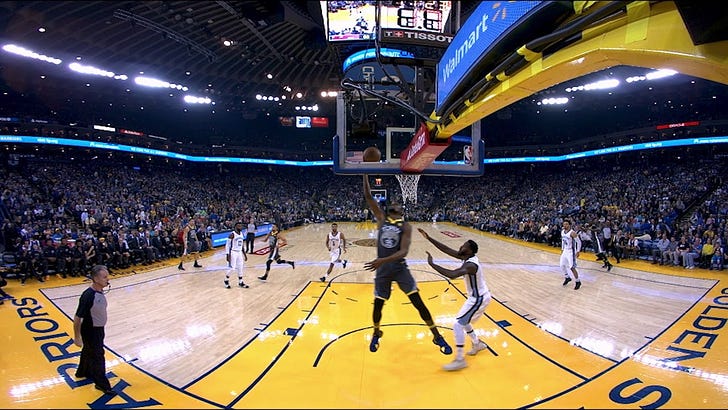That sentence doesn’t mean much to most of you. We all know Apple. NextVR is a small company that did much of the sports and entertainment content for Oculus, the Facebook-owned virtual reality platform. While MLB did games themselves, basically putting a virtual giant screen version of a flat game, NextVR showed another way.
That way is more important than ever in a post-pandemic world.
NextVR had a deal with the NBA to show games and highlights during the 2019 season. They had a couple ways they did this and trust me, you don’t get it without seeing it and without seeing it, it’s a tough sell. Once you do, you’re in. (The video below shows you the content, but you do not get the feel at all.)
First, NextVR would place a camera in the vicinity of the basket - sometimes it was on the stanchion, sometimes behind the glass backboard, sometimes above the rim by the shot clock. I’m not sure how they chose - my guess is it was a test or forced by arena limits - but all three were an intriguing view.
The other way is the one that spoke to me. It was very simply a 180 degree camera placed in the equivalent of a courtside seat. Turn your head to follow the action while seeing the speed and verticality of the modern game. If you’ve never had a chance to sit in those very expensive seats, I don’t recommend it. It will flat ruin any other for you.
While a one-camera setup might seem ‘less than’ a modern multi-camera HD game, it’s not. It’s very literally like being there. It’s not perfect, even on Oculus’ best current hardware, but it’s very good.
However, baseball could be better. MLB has been ahead of the curve on a lot of things since starting MLB.com. There’s been some transactions there, with a lot sold off to Disney, but there remains a lot of talent as well. There’s no reason to think we can’t go from At Bat to At The Game, VR style.
With games likely to be fan-free, there’s no reason not to experiment now. Want those expensive Marlins Man seats? A couple bucks and you can have that exact view. Want to watch free or at least cheap? You’re going to be up there with Bob Uecker. Put ten or twenty cameras around the park and let people choose.
Want to get really fancy? What if season ticket holders could have a camera placed in their seat, with a speaker that would allow them to talk to people close by. Maybe you couldn’t turn around and talk with the guy behind you, but you could have a social game while distanced, Houseparty style. Even sit next to Peter Brand.
More? There’s no reason you couldn’t put a camera on the ump, or the catcher. If you think the Home Run Derby couldn’t put cameras all over the place, including in the outfield, you’re missing the point. The cameras aren’t that big, so if you wanted to wire someone up, the way ESPN has with sound, it’s not that far outside the realm of current technology. (Anyone know if the video stream would take a larger transmitter than the wireless mics?)
If a batter had a camera on him, we could see the pitches move and virtually stand in against them. This technology exists, but it’s seldom real pitchers in real time, which should be useful to teams in terms of prep and in terms of video game sales.
Would I pay a normal ticket price to watch an MLB game in VR? No. Five bucks? A couple hundred for the season or as a premium to my MLB.com subscription? Yes. I’m not sure what the sweet spot of that would be, but MLB has room to experiment and should provide a range of options.
The structure of baseball itself with the lack of collisions, pace of play, and static set lends itself to VR in the same way the NFL built itself for television. The NBA may have a slight jump, but we’re looking at a near-term jump in VR the way the RAZR and Blackberry went to the iPhone.
MLB should go virtual, giving themselves an infinite seating capacity at every stadium, and the chance to build a Red Zone like product that could expand their audience like nothing since radio. I hope they’re ready.




